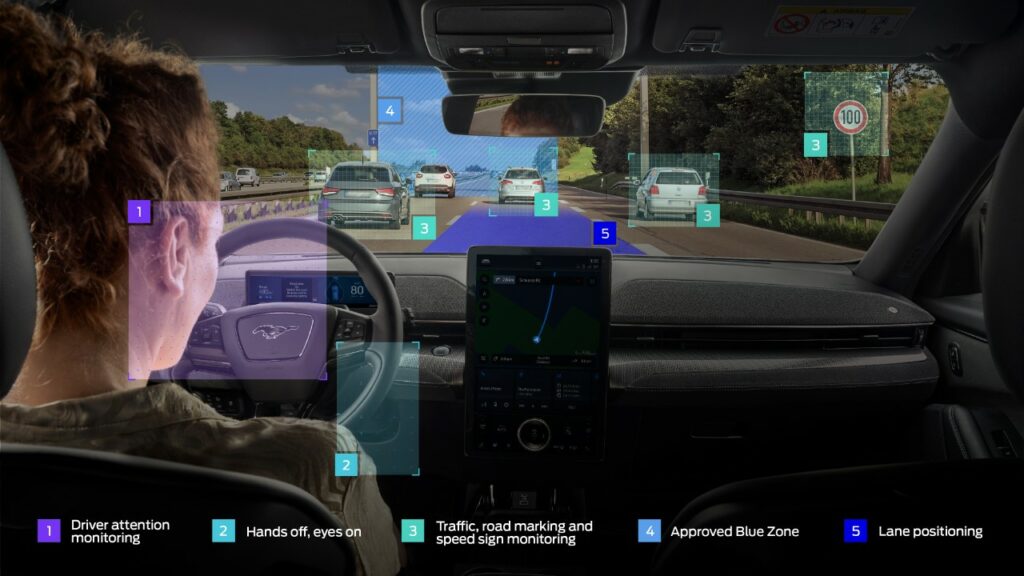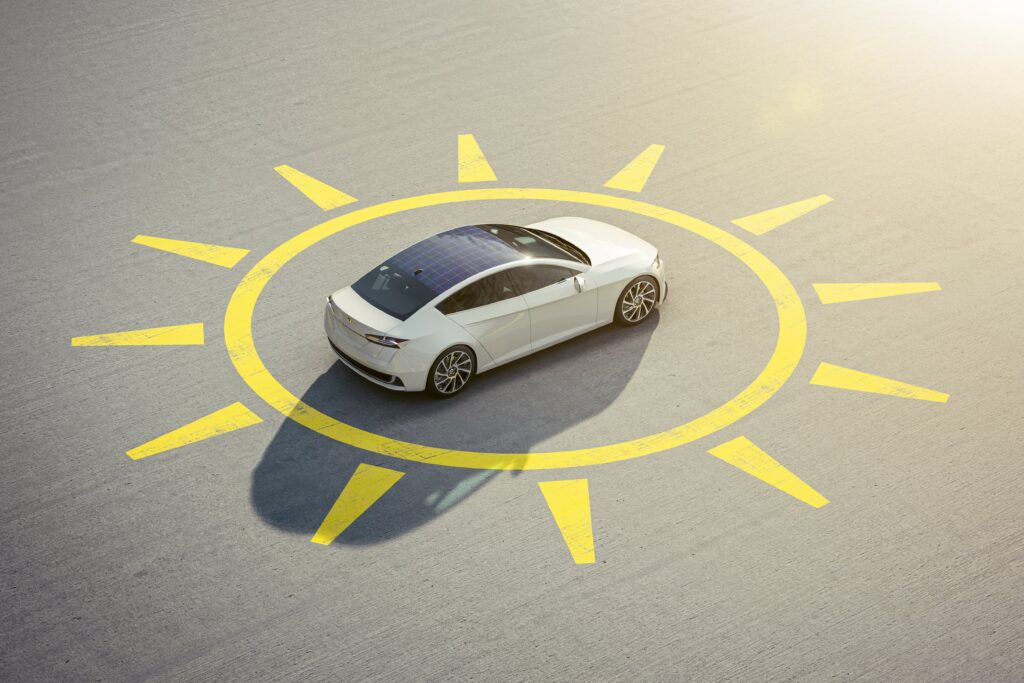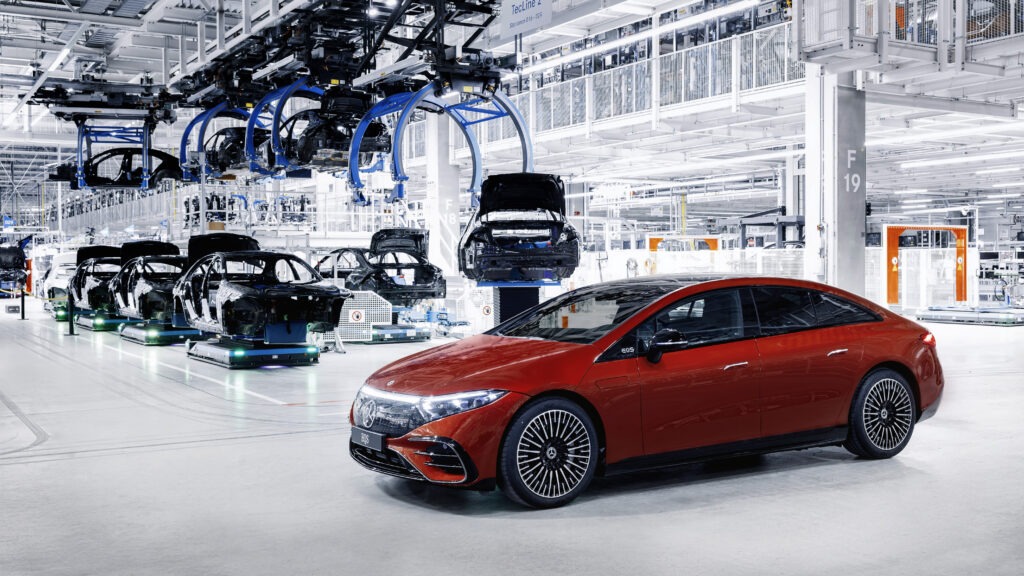UK set for hands-free driving in latest autonomous-technology development
18 April 2023

The UK has become the first country in Europe to allow hands-free driving technology. Ford’s advanced driver-assistance system (ADAS), BlueCruise, will lead the charge on the country’s motorways.
Developed in the US, BlueCruise monitors road markings, speed signs and evolving traffic conditions. It uses this information to inform steering, acceleration, braking and lane positioning while maintaining a safe distance from the car ahead.
The system can be used on 2,300 miles (3,700km) of mapped motorway, known as ‘blue zones’ and will be available as a feature-on-demand (FOD) subscription for owners of the 2023 Mustang Mach-e. Ford expects to roll out the technology to other European markets once regulations allow.
‘It is great news that Ford has chosen us for the European launch of its BlueCruise technology, and I am delighted that this country is once more at the forefront of innovation,’ said Jesse Norman, UK transport minister. ‘The latest advanced driver-assistance systems make driving smoother and easier, but they can also help make roads safer by reducing scope for driver error.’
The introduction of BlueCruise follows a recent trend which has seen carmakers pivot away from investing in fully-autonomous technology and focus on ADAS. While Ford presents its SAE Level 2 (L2) system, work on more capable L3 technology continues across the industry.
Kia stated its new EV9 will feature an updated version of its Highway Driving Pilot that will provide real-time assistance across a range of conditions, giving the driver ‘a break from operating the vehicle.’ The feature will be included in its EV9 GT-line models with further information to be unveiled at a later date.
UK’s ‘self-driving’ plans
In 2022, the UK government announced plans to allow fully-autonomous vehicles, which it called ‘self-driving’, on all of the country’s roads by 2025. It believes that moving forward with connected and autonomous mobility (CAM) legislation will help to make journeys safer, greener, easier and more reliable.
The proposal document was published at the launch of a new consultation on plans, with feedback still being analysed. It looks to establish a detailed regulatory and legislative framework in which autonomous vehicles can operate, while also building a strong UK-based supply chain and skillset. Primary legislation for their use has been passed, while various research programmes are ongoing.
Ford’s decision to use the UK for its European launch of BlueCruise could be seen as a significant win for the country, backing its aims to be one of the leading markets for autonomous technology. The carmaker has a strong market presence in the UK too, which may make it a more profitable region for the technology to be launched in.
Hands-free L2 automation
BlueCruise is classed as an L2 autonomous technology, making it a driver-support system, not an automated-driving system. It is the first ‘hands-free’ technology to be approved in the UK, with Tesla’s Autopilot requiring drivers to keep their hands on the wheel at all times during operation.
‘Hands-free’ might seem close to L3 autonomy. However, Ford’s technology still requires the driver to continually monitor the vehicle and its movements, with sensors ensuring focus on the road does not waiver.
Additionally, BlueCruise can only be used in certain locations, in certain situations, and cannot initiate certain movements such as lane changes. In an L3 system, the vehicle can monitor the road ahead and switch lanes when required, while the driver only acts as a fallback, ready to take control of the vehicle when alerted.
‘There is a good reason why Ford BlueCruise is the first hands-free driving system of its kind to be cleared for use in a European country. We have proven that it can support the driver while still requiring that they keep their eyes on the road for their safety and that of their passengers while the system is active. That means BlueCruise can help make other road users’ journeys more comfortable too,’ said Torsten Wey, chief engineer, ADAS, Ford Europe.
Ford is one of the leading autonomous-technology developers, thanks in part to the talent it acquired from Argo AI. When faced with mounting costs and unable to find further external investment beyond its tie-up with Volkswagen, the carmaker decided to wind down Argo AI and shift spending to in-house L2+ and L3 system development in October 2022, a programme which has resulted in BlueCruise.
‘Things have changed, and there is a huge opportunity right now for Ford to give time – the most valuable commodity in modern life – back to millions of customers while they are in their vehicles,’ said Ford president and CEO Jim Farley in an earnings report last year. ‘It is mission-critical for Ford to develop great and differentiated L2+ and L3 applications that at the same time make transportation even safer.
‘We are optimistic about a future for [L4] ADAS, but profitable, fully autonomous vehicles at scale are a long way off and we will not necessarily have to create that technology ourselves.’
Subscription model driving
Ford announced that BlueCruise will be offered as a subscription service, making it an FOD available to customers who own a 2023 Mustang Mach-e, with rollout to other compatible vehicles a possibility. Drivers will be able to experience the system free for 90 days before moving to a monthly payment plan.
The move makes commercial sense for Ford, which can monetise autonomous driving technology while offering a number of benefits to drivers. This type of subscription service was highlighted by BMW last year, making its heated seats available in a subscription model.
There is an additional benefit for carmakers. By making its ADAS available via subscription, Ford could utilise the connected car platform to capture driver data. The company has not detailed what data it would be able to capture via the service but has stated that users will need a FordPass Connect registration, which means providing contact details and vehicle information.



